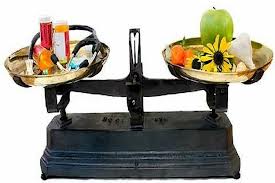 You have heard your friends toss about the phrase “complementary medicine” but you didn’t know what that meant and were too embarrassed to ask. Is this something you should know about?
You have heard your friends toss about the phrase “complementary medicine” but you didn’t know what that meant and were too embarrassed to ask. Is this something you should know about?
Yes. Complementary medicine means those techniques not considered part of conventional (standard/mainstream) medicine. These therapies are utilized in addition to or a as complement to traditional medical practices. When this approach is combined with regular medical care, it is referred to as integrative medicine.
An example of complementary medicine is taking herbal medications in addition to conventional medicine. Doing yoga, getting massages, undergoing acupuncture and attending support groups is also part of the integrative approach to healing. This is a holistic method where the patient is treated emotionally, spiritually and socially as well as bodily.
Complementary Versus Alternative Medicine
Complementary medicine is not the same as alternative medicine. The former is used in conjunction with traditional medication whereas the latter is used rather than conventional medicine.
When adhering to the harmonizing or complementary method, a person does not swap any part of his traditional treatment, such as undergoing chemotherapy, with something else but adds to the conventional regimen. He undergoes chemo and does yoga, for example.
When a physician suggests a whole-body approach to healing and recovery, this means incorporating naturopathy, homeopathy and ancient healing systems to mainstream treatment.
Mind-Body Approach
When a mind-body approach is taken, interaction between the mind and the body increases, which boosts the odds that an individual successfully heals from his sickness or injury. When a person engages in art therapy, meditates, relaxes or prays this is an example of bind-body connection methods.
Naturopathy concentrates on noninvasive remedies that help the body do its own curing. This line of attack includes way of life counseling, exercise, acupuncture, massage and herbal solution.
Homeopathy utilizes small doses of a substance creating symptoms that trigger self-healing reactions.
Traditional Chinese medicine and Ayurveda from India are ancient healing approaches, which many find beneficial.
Body-based and manipulation techniques are used to maneuver or move explicit parts of the body. This is achieved through massage, osteopathic manipulation or chiropractic care. Many patients find great relief and experience faster healing after undergoing this type of treatment.
Energy Medicine Therapy
Another option is energy medicine therapies such as reiki, therapeutic touch, magnet therapy and qi gong. Many complementary and alternative practitioners believe an imperceptible energy force surges through the body.
When this energy is out of whack or blocked a person becomes sick. This energy is referred to as life force, prana and chi. Unblocking or re-harmonizing the energy strength is the goal when engaging in energy therapies.
The smartest thing a person can do is advocate on behalf of his own health and welfare. When undergoing treatment for an illness or injury, ask questions. Inquire about complementary and alternative medicine options.
A patient should never be afraid to ask questions on his own behalf. Become an informed consumer and knowledgeable patient and an active participant in your treatment or in the treatment of your children who rely on you to advocate for them.
Josie Graham is a professional blogger providing news and information on the latest in neurological treatments. She writes for Karen Bontia MD Neurology, one of the top neurology specialists in Irving TX.



